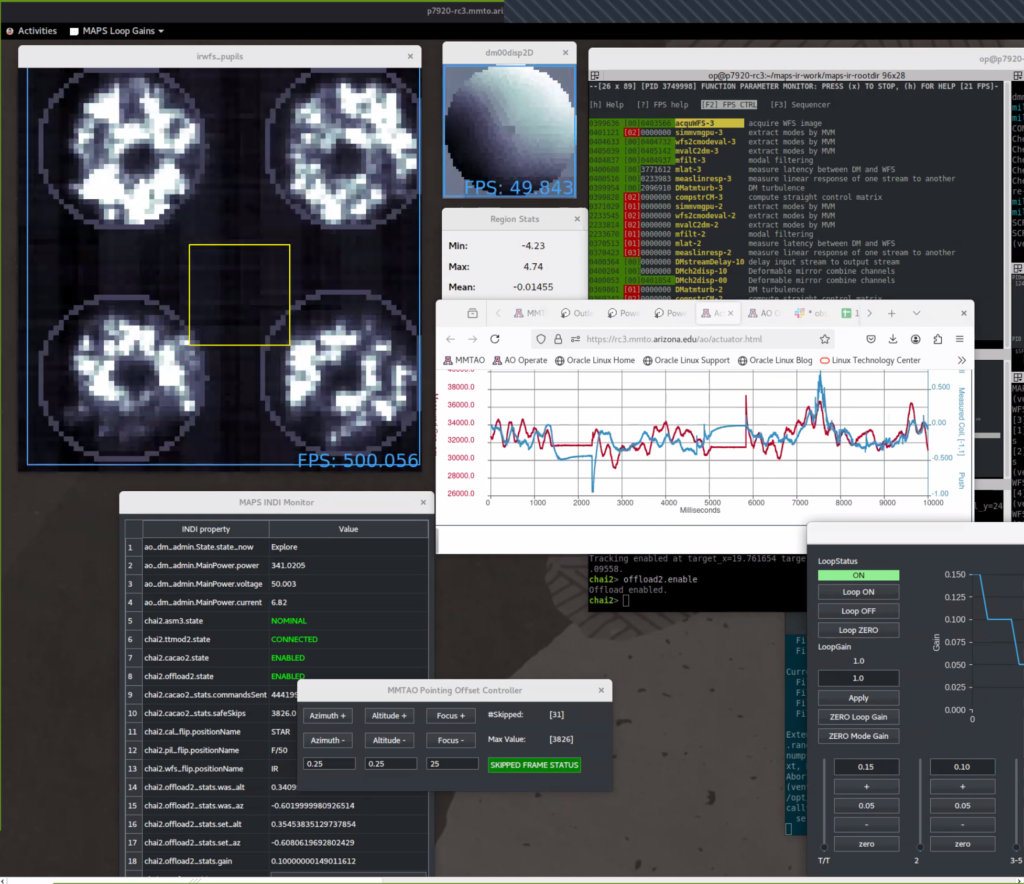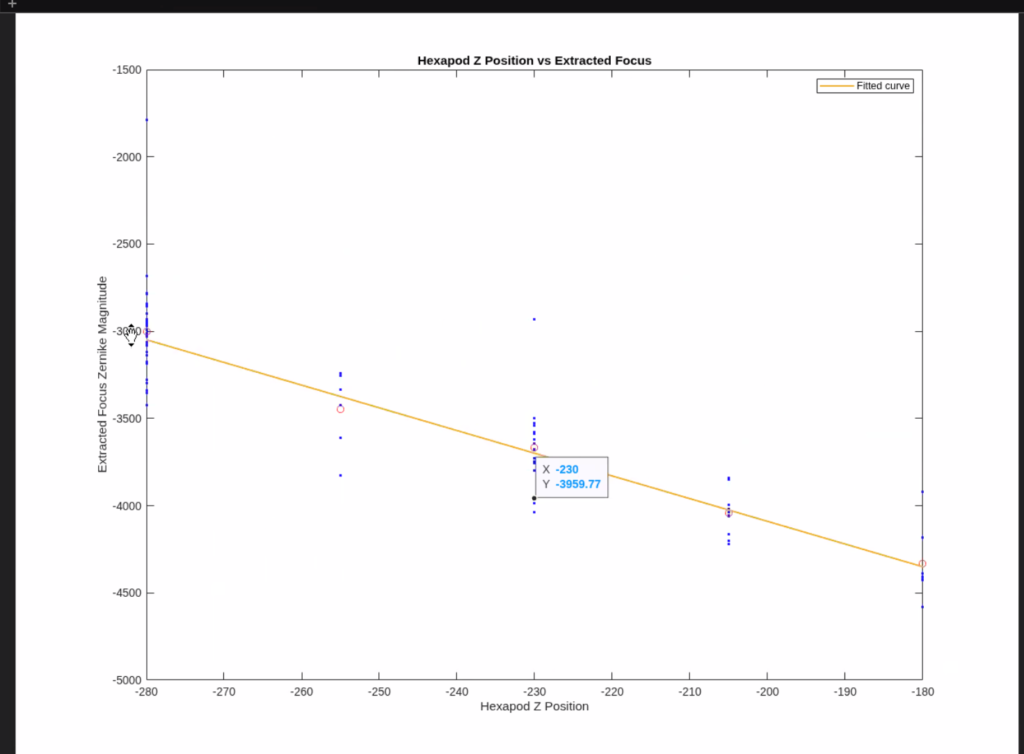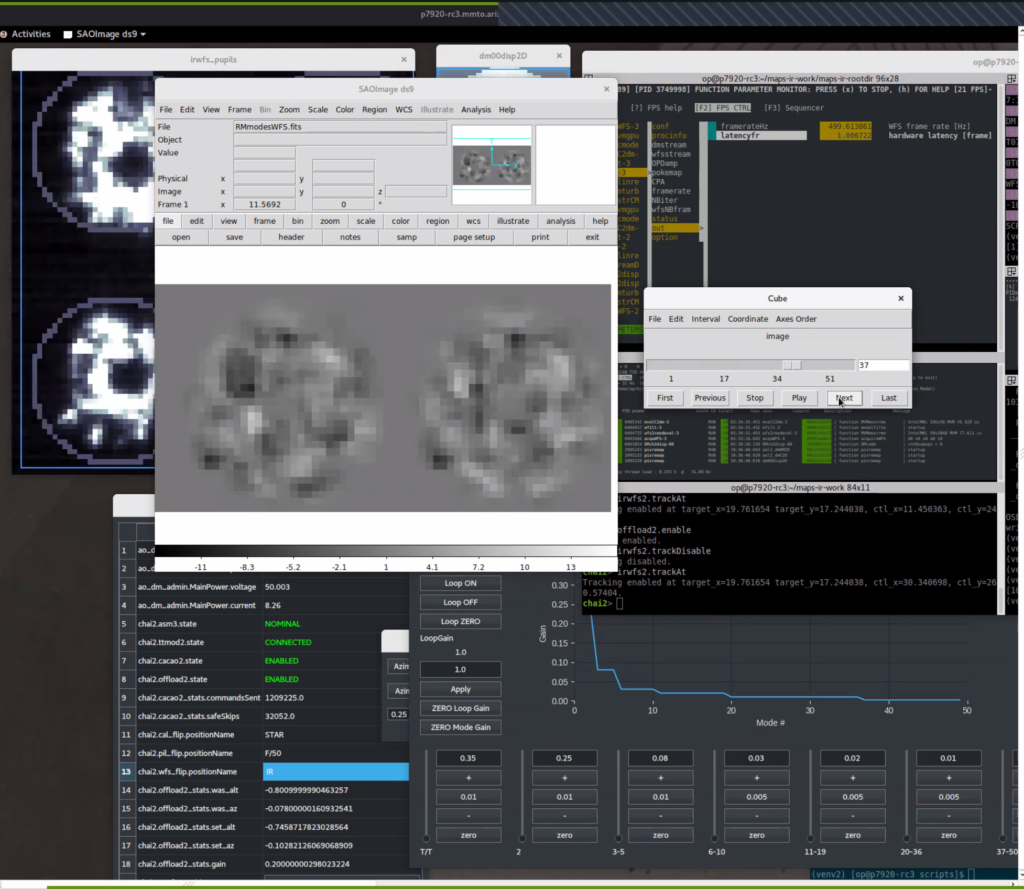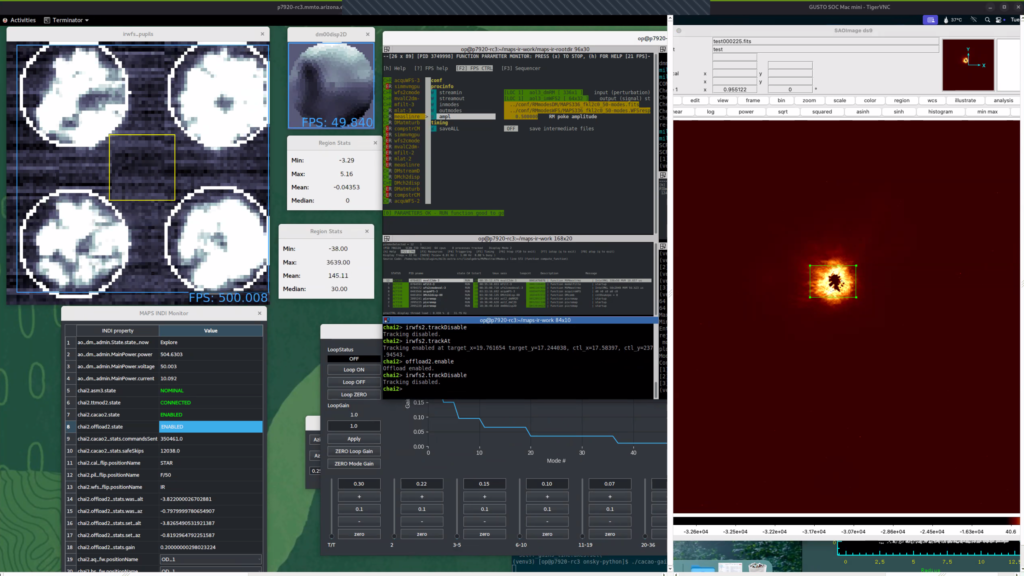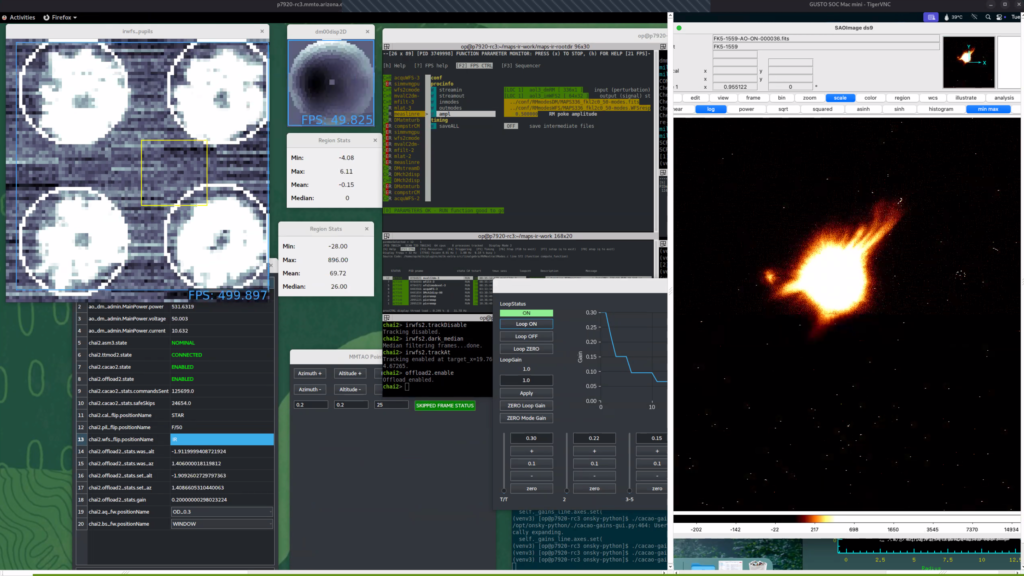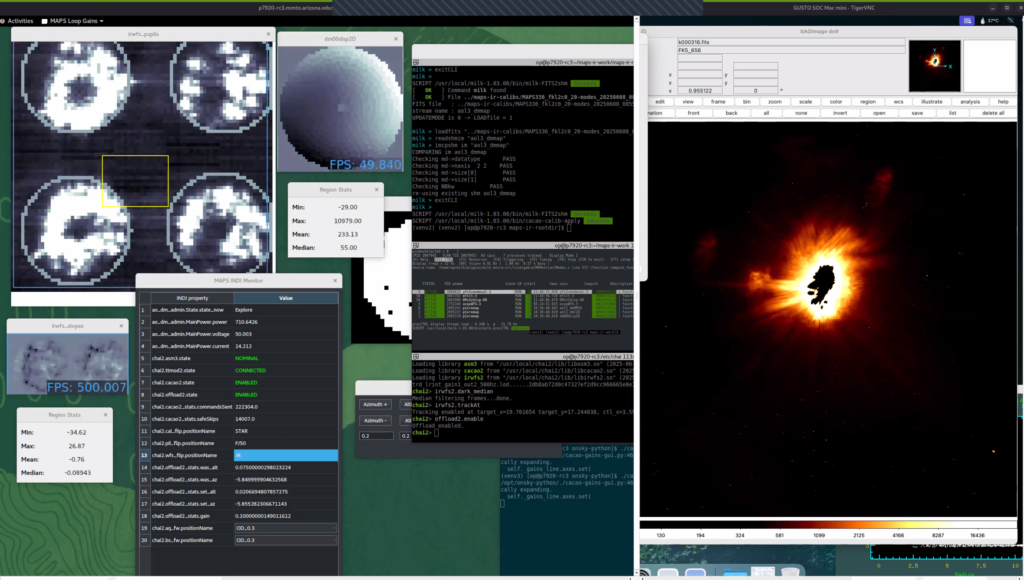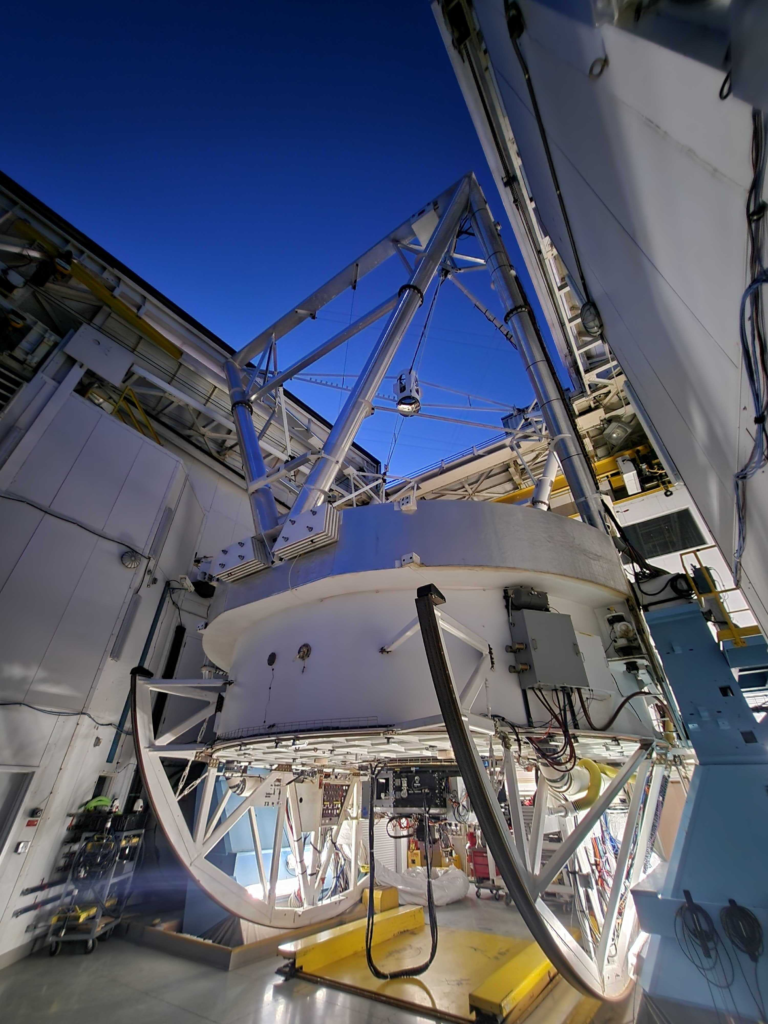We’ve just come down from a 6 night MAPS run at the MMT. We had 5/6 clear nights and figured out what we need to do to improve AO operations with CACAO. We also completed testing offloading the first THREE modes (tip, tilt, and focus) to the azimuth mount, elevation mount, and hexapod. Finally, we have two distinct nod positions working — next up on that will be arbitrary positions.
Alignment: Over the summer we built a new telescope simulator to output an f/15 beam for testing. This enabled us to build a matrix for nodding with the periscope quite well. Unfortunately the Vis PyWFS pupils were too small and thus we are not certain the beam was, in fact, f/15. So instead we planned to spend the first night or two doing on-sky alignment. This is all an attempt to more precisely conjugate the Vis PyWFS to the pupil of the telescope.
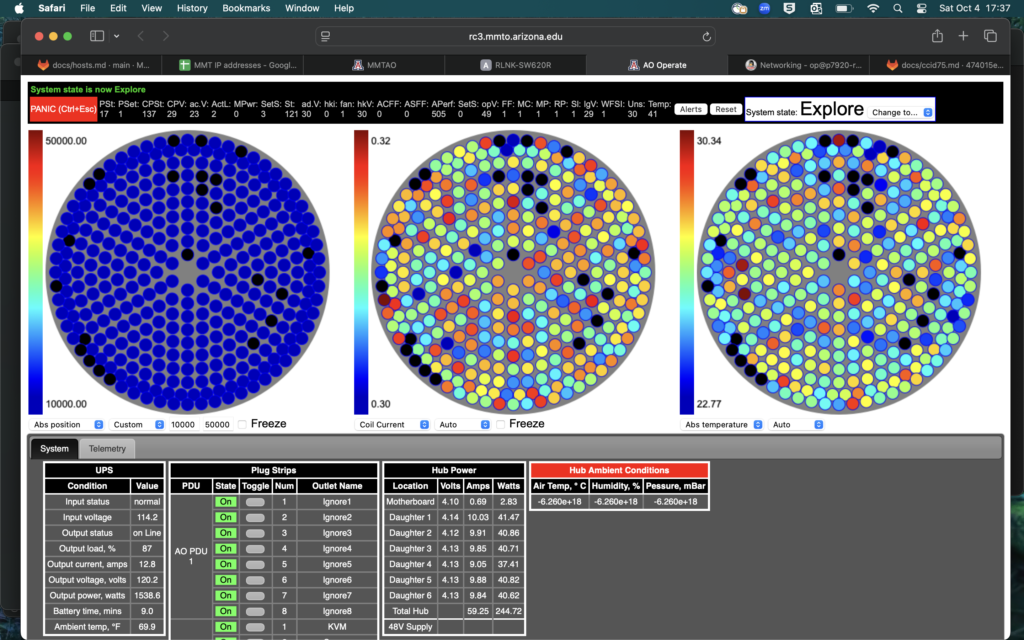
Vis WFS: Early on the first night we tested the CCID-75 and it was working. Later we power-cycled it… and never got it back up. We could see that it was reading out, but it would not accept commands over the serial. We are now getting help from the manufacturer. For the run we switched to IR WFS.

IR WFS: On the second night we switched to IR WFS. But we couldn’t communicate with the Saphira, so during the third day our crew came back up and discovered that two fibers had been swapped. After replacing those, the Saphira worked great and we were able to operate the IR WFS for the entire run. Hooray for having two wavefront sensors!
On Night 3 we completed on-sky alignment with a working IR WFS and by centering the beam on the dichroic by eye (with a card and target). We carried on to CACAO. Unfortunately we were seeing a lot of noise in the slopes step. During the next day our software engineer discovered a bug because the pupils were closer to the edge so there was a bit depth problem.
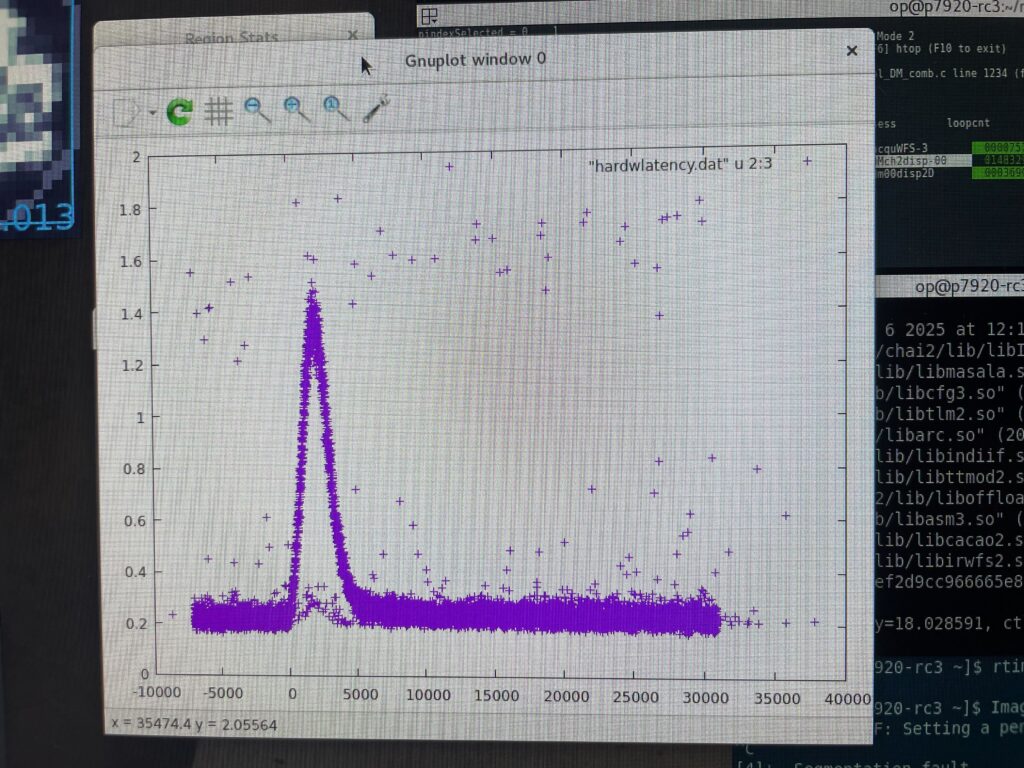
Side note: the pupils were closer to the edge because they seemed to be larger. So something about our realignment with Vis WFS was also upstream of both and caused the IR WFS pupils to be larger — does that mean we changed the f/#?
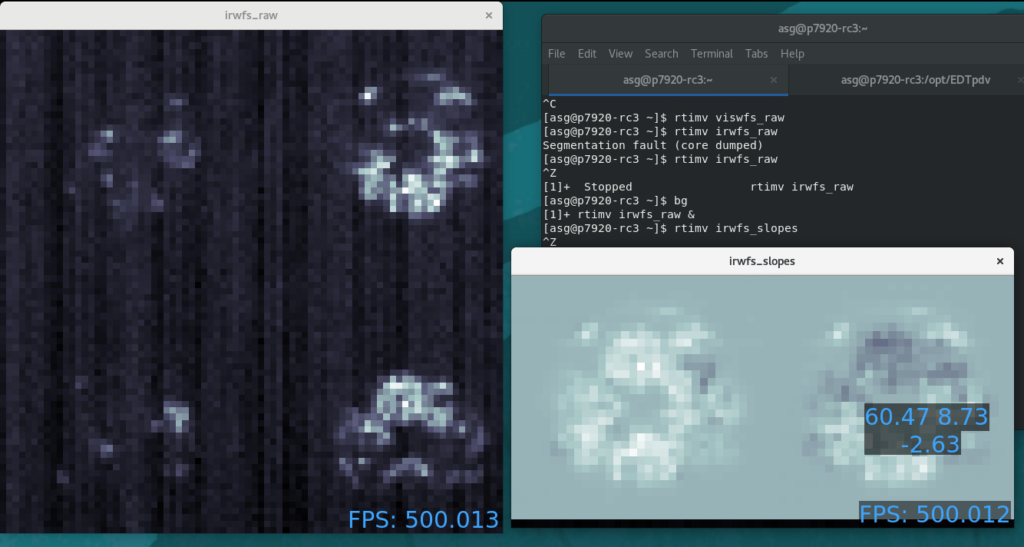
On Night 4 now we were aligned, our camera was working, and our software slopes calculation was working, we were able to close on 20 modes and work on bootstrapping to higher modes. We decided we needed to turn on offloading to make sure we had enough stroke to put on a higher signal in the calibrations. So we spent some time to finalize the focus offloading to the mount (had already done tip and tilt) to the hexapod. By the end of the night we got a good 20 modes reconstructor on the IR WFS.
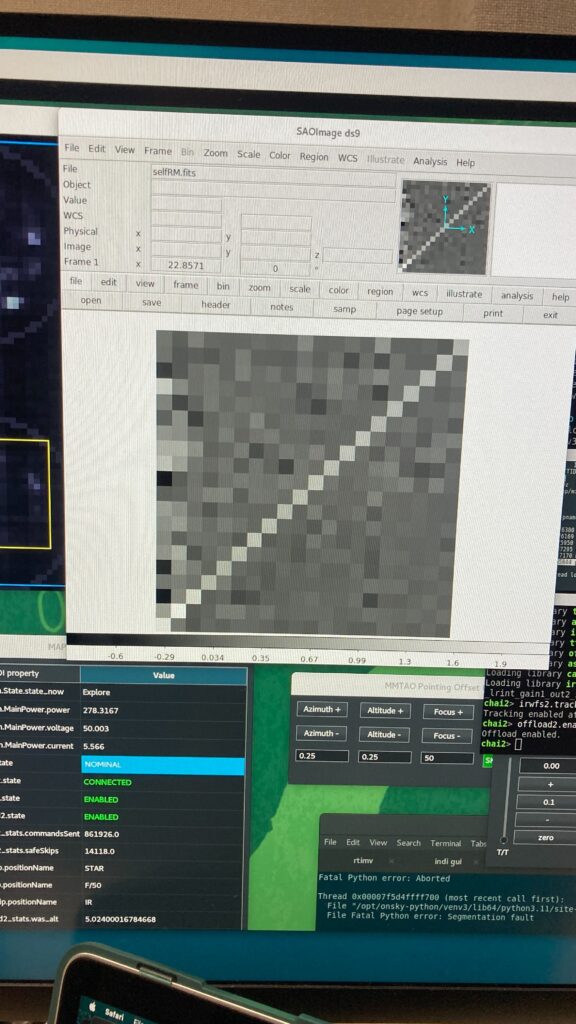
On Night 5 we continued to bootstrap to higher modes, going up to 50. This included testing ways to increase the amplitude of the calibration poke, but modally: We simply multiplied the lower orders in the basis set that we were applying. We also had difficulty with the pupil tracker at one point when we went to a new star and the pupils drifted. By the end of the night we had taken a new 50 modes calibration, but the selfRM was clipped above 32 modes due to a software parameter set somewhere that we couldn’t find ourselves.
On Night 6 we were completely clouded out. But we worked on the software, and on our user manual.
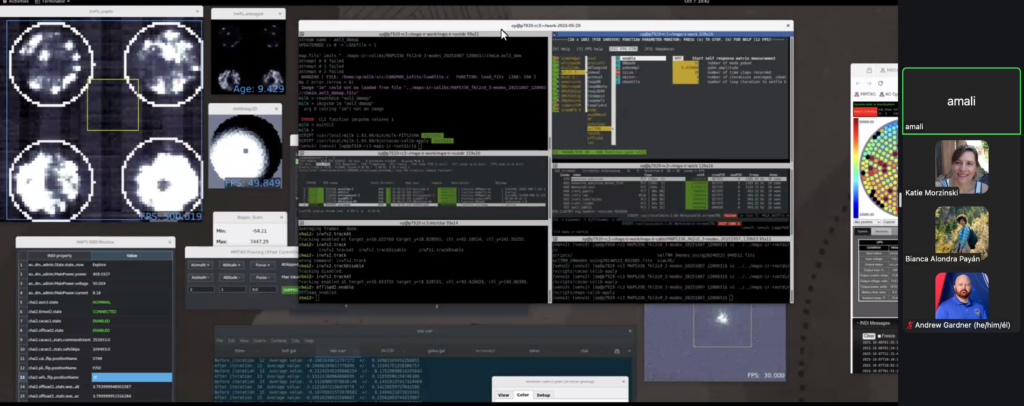
ASM testing: Our instrument scientist took telemetry at various elevations and with the mirror power but uncontrolled, vs. controlled at the flat shape. He found that there wasn’t much difference in elevation, but the outer rings move a lot when uncontrolled, indicating the noisiness at the edges where air damping doesn’t work and velocity damping is needed.
All in all a very useful run for making progress on AO performance!
Song of the run: “If All of the Raindrops” by Old Town School of Folk Music:
